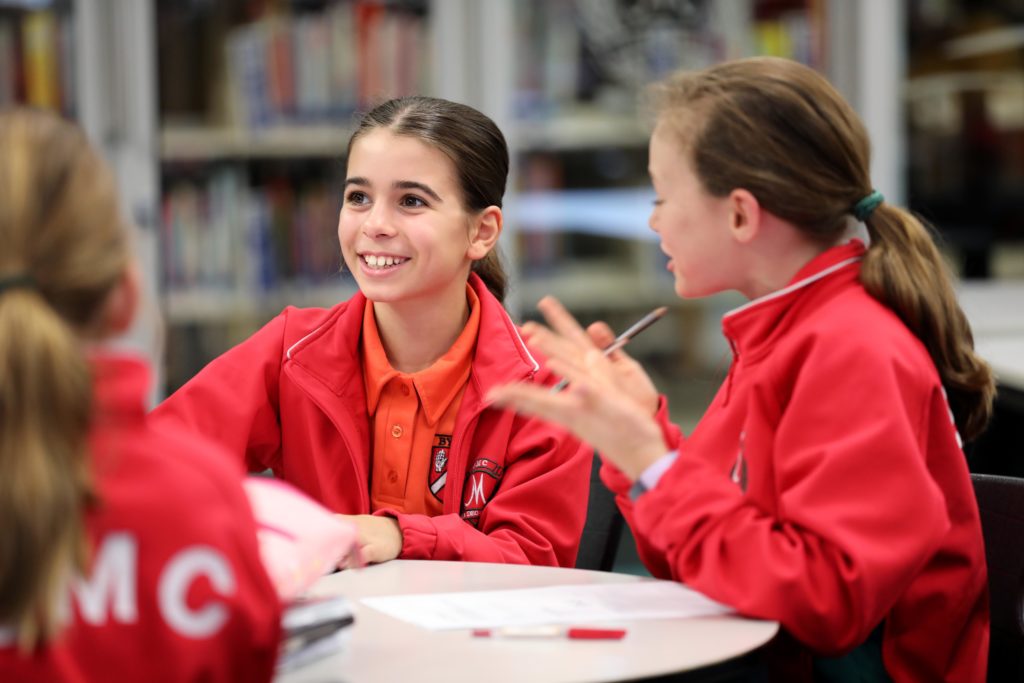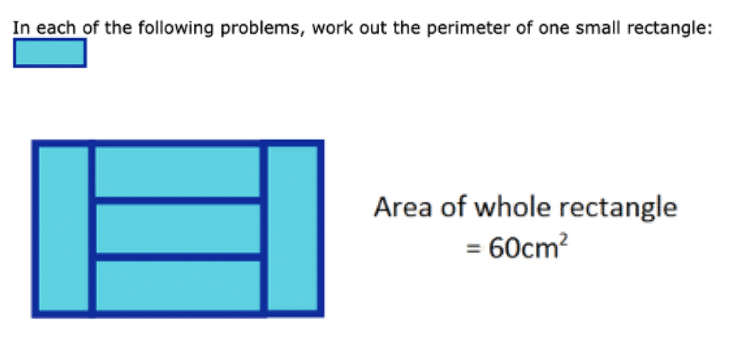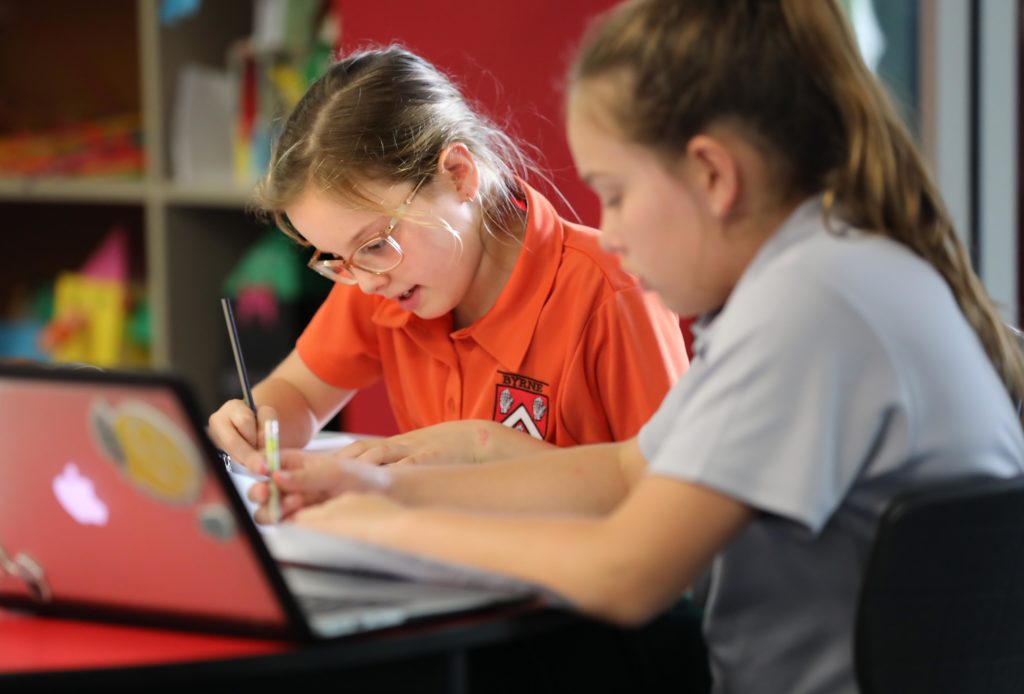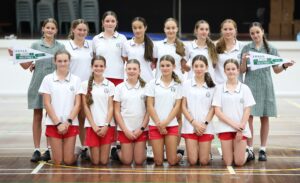Extending Our Girls in Maths

This week we chatted with Dr Chrissie Fossey, about the Maths Extension Program offered to students in Years 5 & 6.
How are students identified for the Maths Extension class?
At the start of Term 1, Years 5 and 6 teachers identify students who have strong maths skills based on their work in class and also from in-house testing results. These students then attend Maths
Extension lessons in place of their normal maths lessons. The girls attend these classes four times a week. We regularly do pre-tests for each new topic. When we see students are particularly strong or weak in an area, we move them between our classes so there is movement in and out of classes throughout the term.

Who is the class aimed at?
The class is aimed at students who have strong maths skills in the topic we are studying and who enjoy a challenge. I aim to make sure all students work outside their comfort zone and feel regularly challenged. I don’t want the work to be easy, I want students to learn to persevere in maths even if they don’t get the final answer correct. It’s the progress they make and the feeling of working through a difficult problem that we want to familiarise them with. This will help prepare them for their future learning experiences.
What makes this class different to a regular Maths class?
This class is different in that we will often cover the main curriculum faster than in the normal class allowing us time to complete enrichment work on the same topic. This leads to a deeper understanding and also to experience the discomfort and enjoyment of difficult maths. Most importantly, I want them to really enjoy doing maths.
Below is an example of an extension question on perimeter and area, that our Year 5 students worked on in class.


Maths Challenge Competition
Currently I have 32 students across Years 5 and 6 completing the Maths Challenge competition, organised by the Australian Mathematics Trust. This competition runs over three weeks. Students have to answer four different problems. Each problem consists of four parts and may take an hour or more to work through.
The girls can work on their own or in groups of up to three students. Many are using their recess time to work on these problems together. All students in Years 5 and 6 were invited to participate and its fantastic that so many have chosen to spend their free time both in and out of school to do some extra maths. The buzz in the room and the conversations they are having about maths when they are working on the problems is so exciting to hear.

Combating The Attention Spans Crisis In Our Students – Jennifer Oaten
It is no secret that attention spans have been steadily declining, especially among younger generations growing up immersed in digital technology. The average person’s attention span when using a digital device has plummeted from around two and a half minutes back in 2004 to just 47 seconds on average today – a dramatic 66% decrease over the past two decades.

Weekly Wrap Up: Term 2, Week 2, 2024
Week 2 has come to an end! This Weekly Wrap Up features highlights from Scuba Diving Club, the Sisterhood Series, and Boarding ANZAC Service.

Santa Maria Teams Shine in Term 1 Sports
Santa Maria had a huge number of girls in the IGSSA AFL and Volleyball competition with strong results for a number of teams.
- AnalyticalSkills, CriticalThinking, Featured, ProblemSolving
Author: Santa Maria College
Santa Maria College is a vibrant girls school with a growing local presence and reputation. Our Mission is to educate young Mercy women who act with courage and compassion to enrich our world. Santa Maria College is located in Attadale in Western Australia, 16 km from the Perth CBD. We offer a Catholic education for girls in Years 5 – 12 and have 1300 students, including 152 boarders.






